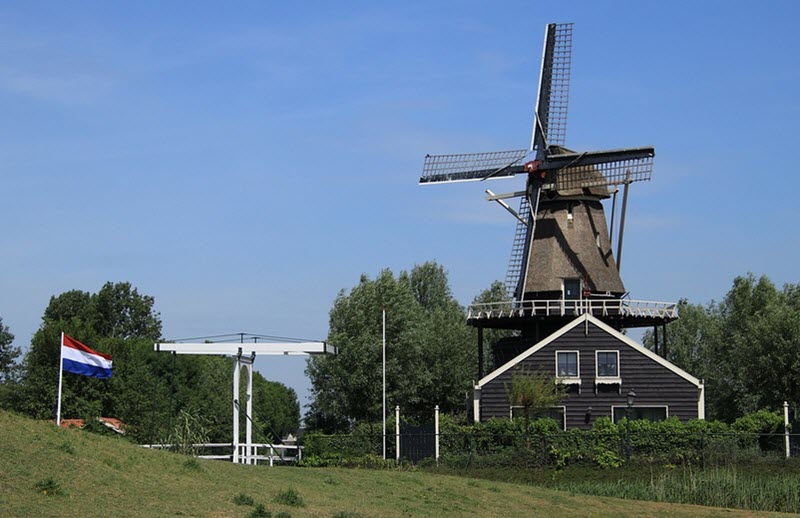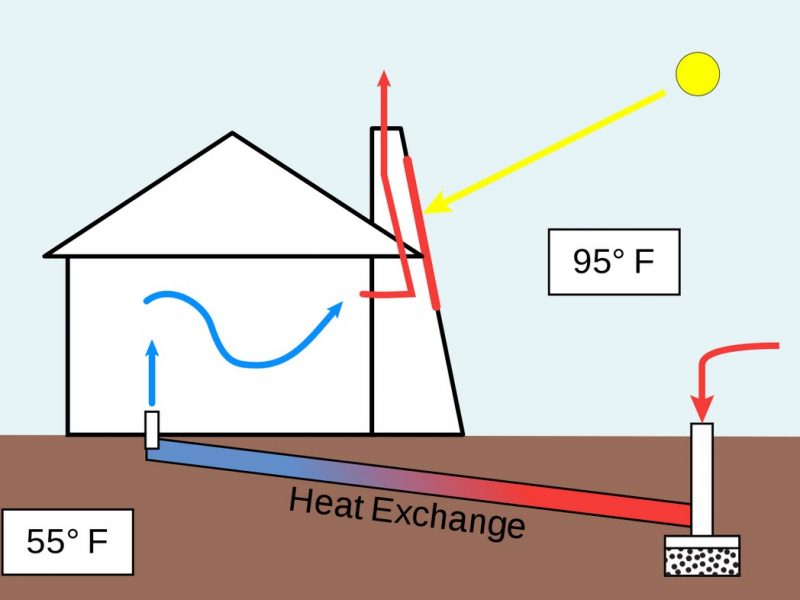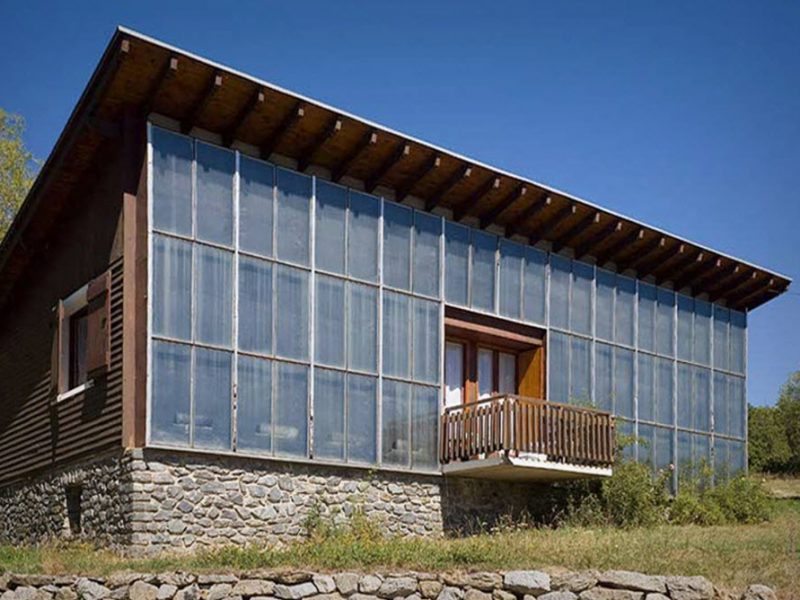Wind turbines can be placed on top of buildings, or even be integrated into the building, but most building owners prefer to erect an independent wind turbine structure near the house instead.
Why?
Here are a few reasons:
- The building must be able to support the wind-turbine. If the building was not originally designed for this, altering and strengthening it can be much more complicated than simply erecting a new free-standing windmill structure. In many cases, wind-turbines that can be safely placed on existing buildings are so small that their power-generating ability does not amount of much. They become a source of a bit of extra electricity rather than something the whole house can run on.
- Wind turbines generate noise and vibrations.
- Insurance companies can be reluctant to insure the building.
- The place where your house is located on your property might not be the optimal spot from a wind perspective.
With that said, adding a wind turbine next to your property can have many benefits, including economically and from a self-reliance perspective.
Are wind turbines only suitable for buildings in very windy locations?
The electricity generation for a wind turbine will be impacted by wind speed. To put it simple: faster wind means more electricity output. Unfortunately, fast winds are also powerful and can wreck havoc with wind turbines. Fast and powerful winds, especially if combined with turbulence, will require extra sturdy wind turbine solutions and many of them are not safe to simply put on top of an existing building. Therefore, the fact that your home is not routinely subjected to very strong winds can actually make a wind turbine a more suitable addition to the home rather than less. So do not despair if your home is not in a very windy spot – it might actually be beneficial, as long as there is some wind.
The most favourable conditions for a residential wind turbine is a combination of consistent and not overly strong winds, with little to no turbulence.

Using wind turbines to power a building
The wind brings kinetic energy that powers the wind mill. An electrical generator turns the energy into electrical power. Therefore, the wind turbine will only provide electricity when there is wind. Wind turbines are a so-called intermittent energy source and are often combined with some at-will or at least more predictable energy source for off-grid homes, e.g. diesel-powered generators or hydroelectric power. Another option is to store excess energy in batteries, to be used when wind is lacking.
In some locations, it is possible for on-grid buildings to sell excess electricity to the grid during high-yield periods and then use the money (or credits) to buy electricity from the grid as needed.
Where to put residential wind turbines?
Wind speed and direction is often unpredictable on a day-to-day basis, but if we look at longer periods of time, we can usually see how certain wind directions dominate at a certain location, how winds tend to change with the seasons, and how the annual wind power output is fairly similar from year to year. There is a certain degree of stability over time, but not for short time frames. Therefore, it is important to have access to long-term date when deciding where to put a wind turbine. If the property is large enough, there can be some benefits to putting wind turbines in several locations and let them complement each other.
Must wind turbines be put at a very high altitude?
No. While some altitude is recommended, residential wind turbine structures do no need to be as tall as the ones you might have seen at large commercial wind farms (wind power plants).
At ground level and near ground level, the wind can not move freely because of topography, trees, buildings, etcetera. Therefore, the wind-speed is higher a bit up, where there is less resistance. How tall your structure should be will depend on local factors.
This doesn´t mean ”the higher the better”. A few hundred meters above the ground, the wind actually becomes less powerful because the air is less dense.
Wind farms
In the year 2019, the installed wind power capacity exceeded 651 GW globally and wind supplied 1430 TWh of electricity. This means that roughly 5.3% of the total worldwide electrical generation came from wind power. A lot of that did not come from wind turbines installed on or near residential buildings. Instead, it was generated by big wind farms, also known as wind parks and wind power plants. Wind farms exist both onshore and offshore, and the largest ones encompass several thousand turbines.



